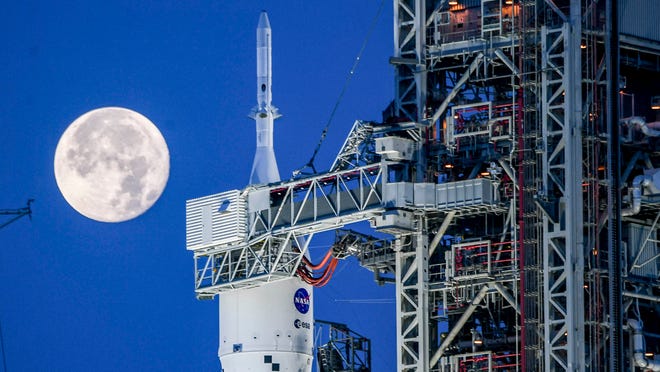Technical issues robbed spectators in Cape Canaveral, Florida, and around the country of something Americans haven’t seen in more than 50 years: a launch to kick off a NASA program to send humans to the moon.
The NASA rocket, complete with a crewless Orion capsule, was set to launch the Artemis I mission on Monday from Florida’s Kennedy Space Center, the same launch site that saw the Apollo missions send humans to the moon in the 1960s and 1970s. Last-minute engine cooling problems, fuel leaks and other concerns caused NASA to call off the launch.
The space agency announced it will try again Saturday afternoon.
“Meteorologists with the U.S. Space Force Space Launch Delta 45 predict favorable weather conditions for Saturday,” NASA said on its website. “While rain showers are expected, they are predicted to be sporadic during the launch window.”
Graphics:After 50 years, US takes its first step back to moon with launch of Artemis I
Artemis I is the first in a series of missions over the coming years with the goal of putting astronauts on the moon again and lay a foundation for sending humans to Mars, NASA has said.
NASA Artemis I moon launch schedule
NASA has determined the next two-hour launch window is Saturday afternoon beginning at 2:17 p.m. ET.
The mission around the moon and back is expected to take 39 days. Splashdown for the Orion spacecraft is expected Oct. 11, according to NASA.
Artemis SLS vs Apollo Saturn V:How the moon mission rockets compare
Where to watch NASA Artemis I moon launch: Streaming, TV info
USA TODAY will livestream the launch on a variety of platforms, including YouTube. Coverage begins on Saturday at 1:30 p.m. ET.
NASA will have coverage on its TV channel, NASA TV, beginning at 5:45 a.m. ET as crews prepare the rocket for launch through the morning. It also will have live coverage on its website.
What’s on board Artemis I? Snoopy, Legos and ‘manikins’


